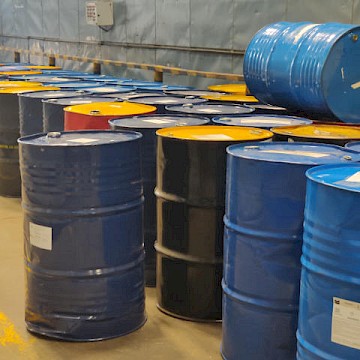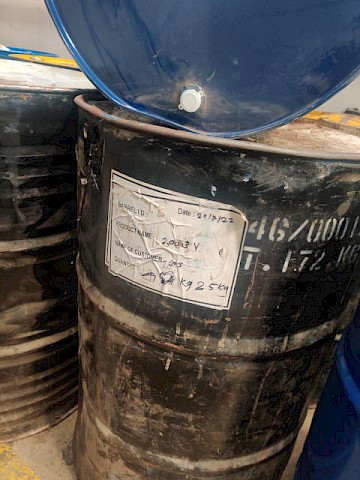Quality Check at Doorstep: Why And How
 What have you learned from the pandemic? This question hits us to think that even our bad times teach us the most important lesson for the future. Among all the lessons, I want to highlight which I can relate to my industrial experience as well i.e., “Quality of the Product”. We do remember those days of checking the hygiene level of consumable items (even though it is labeled as “100% hygienic”) entering our home, at the very first doorstep to avoid any possibilities of viruses. It is because of our awareness of the impact of a single virus that can be fatal to us and our dear ones.
What have you learned from the pandemic? This question hits us to think that even our bad times teach us the most important lesson for the future. Among all the lessons, I want to highlight which I can relate to my industrial experience as well i.e., “Quality of the Product”. We do remember those days of checking the hygiene level of consumable items (even though it is labeled as “100% hygienic”) entering our home, at the very first doorstep to avoid any possibilities of viruses. It is because of our awareness of the impact of a single virus that can be fatal to us and our dear ones.
Likewise in industries, our machines are like our dear ones and it impacts us if it fails or does not work efficiently. The studies of Machine Reliability & Tribology show that 70% - 80% of machine failures are attributed to Lubrication which is around 1-3 % of the total maintenance budget. Lubrication represents a 1:40 investment rate, which means if $1000 spent on lubrication is properly taken care of & maintained, it can yield a saving of $4000 resulting in $3,900% ROI.
The quality of lubricant our machine consumes plays a significant impact on productivity, its life period, efficiency, and many more to meet goals. So, from where do we need to check the quality of our lubricants? It’s a question that needs more awareness in the industries.
Though Industrial practices for lubrication management vary from plant to plant but assuming “New oil as clean oil” is the most common problem. During reception of the oil barrel at the site it is either stored at warehouses or a defined shed area within the premises. With the variation in temperature throughout the day, the barrel breathes, and the exposure to sunlight, heat, dust, dirt, moisture or any climatic challenges leads to the ingression of contamination into the barrel.
This is how the quality of lubricants starts to degrade before the start of their actual service life. But what happens before it reaches your site? And what are the factors which hamper the oil quality before its reception? Here, I would like to mention that it varies from manufacturer to manufacturer. In general, let us understand the route by the below stages:
Stage 1: Production of Lubricants
Lubricants are produced by the blending of Base oil and additive (also thickeners in case of grease) in a proportion to match the specification of the required application. The process of mixing is done by various methods like using air to agitate or a large slow-speed blender in a closed climatic condition.
Possible Concerns during this stage:
- Hygiene/ cleanliness of blending vessel.
- Quality of air used for agitation (moisture free).
- Blending components are filtered or not
- Lack of breather at the blending vessel
Stage 2: Intermediate Storage of Lubricants
As the lubricants are manufactured in huge batches, they are initially stored in large tanks before reaching the site. New intermediate vessels are built as per volume requirement or the earlier ones are used. Possible Concerns during this stage:
- Occurrence of welding/ grinding dust in new containers.
- Lack of proper flushing of used containers.
- Inadequate installation of the breather to prevent particles & moisture in the tanks.
- Absence of Filtration possibilities while transferring the lubricants.
Stage 3: Transportation of Lubricants
Delivery of Lubricants at your site is done either in bulk or in batches. In the case of bulk transport, the oil tankers are cleaned either by steam or diesel fuel, and the hoses, pipelines, or in-between components used could add to the cleanliness issues of the finished oil. Drums or totes used for batch delivery also create disturbance in the cleanliness level.
 Possible Concerns during this stage:
Possible Concerns during this stage:
- Lack of dedicated/oil-wise containers & their material.
- Chances of cross-contamination.
- Inadequate handling practices led to the Ingression of contaminants if bungs, pipe connectors, and couplers remain open.
- Improper flushing of used tanks/drums for further usage.
Above all factors hamper the required cleanliness of oil to such an extent that sometimes it adversely impacts the system. The acceptable values of oil cleanliness levels are different as per respective applications e.g., the Servo valves require more clean oil than gearboxes. It has been observed that even the fresh oil that arrived at the site is having ISO code 21/19/16 or above NAS 10.
Let us see how we can adopt quality check practices/programs at the onsite reception of lubricants to improve the Lubricant and system reliability:
Inspect the Lubricant Container condition: There is a lot of information you can gather from the oil drum/ container about the condition before reaching your site. Whether the labels/ stickers are torn, damaged, or misprinted restricting giving clear information or it is clean and shiny enough to reflect their storage condition before their arrival. In a quality control procedure, a checklist or documents can be prepared to monitor and record the label condition, manufacturing, or expiration date to know shelf life, batch number, supplier quality certificates details, inspection date & time, and the signature of the quality inspector, reception environmental condition, etc. The robust documented procedure not only helps to check the lubricant quality but also to train the team on the importance of Reliability centred maintenance or proactive maintenance.
Ask for the Test Certificate: It is the right of the consumer to ask for the test certificate of the lot along with the supply of the lubricants at their site. Test certificates should have detailed information about the quality check done before its dispatch like oil analysis, test results, analysis performed details, etc. Make sure to have this at least for the supercritical or critical machines.
Perform basic oil analysis: It is always suggested to randomly check a few samples from each batch to determine the ISO cleanliness level (particle counting), moisture, viscosity, and other basic tests. Either the plant can set up an onsite lab to perform the test in-house or select the neutral laboratory which can provide the correct analysis detail within the required time. There are many benefits of establishing in-house labs such as rapid sample turnaround time, quality control for purchase and optimization of lubricants, awareness of knowledge of lubrication analysis, report interpretation, test limits, cost and time saving, and many more.
Adopt Oil Filtration Practices: With the help of a test certificate or oil analysis, one must get to know the required cleanliness level of oil. To achieve the same at the initial stage, a simple mechanical filtration machine able to remove solid particles or moisture can be placed in the lube room before the oil starts its service. Ensure to keep a dedicated machine for it or proper flushing is done in case of changing oil grades.
 Standard Lubricant Storage: The main objective to store lubricants should be to keep them away from particles, moisture, or any other type of contaminants. Firstly, it must be stored at an indoor warehouse and avoid outdoor storage as much as possible. A standard storage area should have concrete walls & roof (avoid asbestos sheet because it increases heat level in the room), a non-skid or epoxy floor, a ventilation system, a closed climatic control arrangement like AC, a marked aisle or work area on the floor, educational poster, dedicated lubricants handling hardware, safety equipment, and proper housekeeping to clean the premises & make the environment dust-dirt free.
Standard Lubricant Storage: The main objective to store lubricants should be to keep them away from particles, moisture, or any other type of contaminants. Firstly, it must be stored at an indoor warehouse and avoid outdoor storage as much as possible. A standard storage area should have concrete walls & roof (avoid asbestos sheet because it increases heat level in the room), a non-skid or epoxy floor, a ventilation system, a closed climatic control arrangement like AC, a marked aisle or work area on the floor, educational poster, dedicated lubricants handling hardware, safety equipment, and proper housekeeping to clean the premises & make the environment dust-dirt free.
Educating the Team: Lubrication is a subject that has a huge impact on the productivity of any plant, but at the ground level, its management is ignored or taken lightly. Education is the only key to creating awareness which can be done in various ways like presenting any case studies of machine failure resulted due to poor lubrication, placing proper checklists or graphs of lubrication trends on the shop floor, implementing the Color Code identification system, and displaying it on each lubrication hardware, including lubrication activities in Toolbox talk, dedicated training on Lubrication enabled Reliability through external parties and many more.
Following a basic quality control program at the reception of oil can help in reducing the possibility of costly mistakes that can lead to downtime of the entire operation or production process. Lubricants that are out of specification, expired, or severely contaminated, can be returned to the supplier or can be discussed to improve their quality. Establishing a collaborative relationship with a lubricant supplier is very essential for your quality control program. Lubricants quality is something that requires the utmost care starting from its manufacturing to disposal. Lastly, always keep in mind that “Lubricant is the blood of the machine” and you know how important it is to take care of your Blood.
